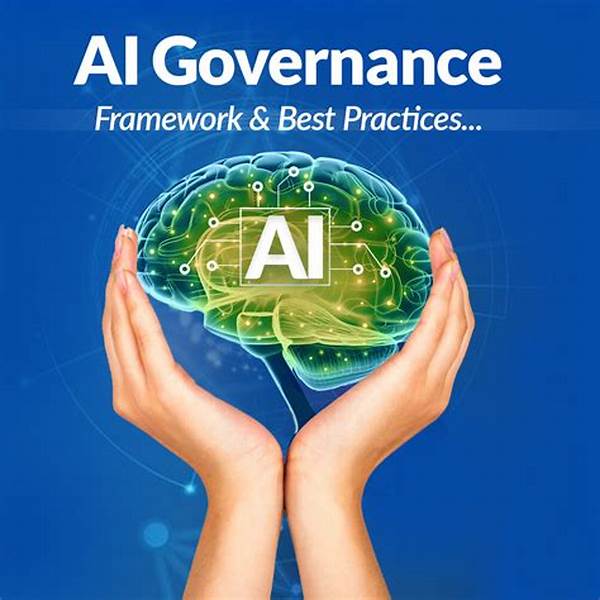In today’s rapidly evolving technological landscape, artificial intelligence (AI) stands at the forefront, transforming industries and reshaping societies. Yet, as AI’s capabilities grow, so do concerns about its ethical implications and potential risks. One buzzword echoing through the corridors of technology conferences and policy-making discussions is “global standards for AI governance.” What does this mean for businesses and governments, and why should the average person care?
Imagine a world where AI systems operate without oversight, making decisions with far-reaching consequences—decisions on who gets a loan, which content surfaces on social media, or even how autonomous vehicles navigate our roads. The potential for bias, privacy violations, and security breaches is immense. Global standards for AI governance aim to create a safe framework that mitigates these risks while fostering innovation. These standards articulate rules and ethics, akin to setting universal ‘traffic rules’ for the AI-heavy highways of tomorrow.
At the heart of these standards is the goal to ensure AI technologies develop responsibly. With nations and institutions racing to position themselves as AI leaders, global standards for AI governance offer a roadmap for harmonizing AI strategies worldwide. They help in balancing technological advancement with moral responsibility, ensuring AI serves humanity at large, instead of a select few.
So what exactly constitutes these global standards for AI governance? They encompass a broad spectrum—from ethical guidelines to data protection mechanisms, transparency obligations to accountability measures. All designed to create a level field of understanding and cooperation among diverse stakeholders such as governments, tech companies, and civil societies. Importantly, these standards strive to maintain the human touch in AI development, ensuring technology complements human capabilities rather than overshadowing them.
The Need for a Unified Approach
Why now, you may ask? With AI powering decisions that impact billions, the repercussions of an unregulated AI environment are daunting. Recent studies have shown that AI, when unchecked, can perpetuate existing biases and widen socio-economic gaps. By embracing global standards for AI governance, we are essentially advocating for AI’s ethical use—promoting technologies that are not just smart but also fair and just.
—
Understanding Global Standards for AI Governance
To appreciate the nuances of global standards for AI governance, we must delve deeper into their components. These standards are not just technical blueprints. They symbolize a collective aspiration for a balanced interplay between AI’s potential and its ethical use. Central to this is ensuring that AI technologies align with global human rights, such as privacy and freedom of expression.
Creating these standards requires meticulous collaboration between technologists, ethicists, and policy-makers. It’s not just about creating guidelines but imbuing them with enforceability. The goal is to build trust in AI systems globally. This means robust methodologies for testing AI systems’ fairness and transparency, alongside clear redress mechanisms for those affected by AI’s decisions.
Implementation Challenges in AI Governance
While the intent behind global standards for AI governance is noble, implementing them is another domain altogether—fraught with complexities. Countries have differing priorities and technological advancements, and what works for one might not work for another. As AI continues to evolve, these standards are likely to require regular updating to remain relevant—a task that demands both coordination and foresight.
—
Taking Action: Steps Towards Global Standards for AI Governance
Goals of Global Standards for AI Governance
Farsighted global standards for AI governance aim to sculpt an ecosystem where AI’s transformative capabilities are tempered by ethical considerations, maintaining public trust as a core component. By harmonizing AI regulations, these standards help integrate AI smoothly into daily life while sidestepping potential adverse effects—like privacy invasions and decision-making biases.
The broader goal is to cultivate an AI landscape that propels human progress, not in competition with humanity but in concord with it. The emphasis lies on creating systems that magnify human efforts in understanding and solving complex problems—stretching from climate change to healthcare innovations—thereby amplifying societal gain and ensuring a democratic dissemination of AI’s benefits. As these standards develop, they endeavor to affirm technology’s role in nurturing a more equitable, innovative, and diverse future.
—
Critical Elements of Global Standards for AI Governance
Understanding the nuanced fabric of AI governance involves dissecting the core elements that shape these policies. It’s not just about risk management but creating a vision wherein
1. Ethical Guidelines: These function as the philosophical backbone of AI governance.
2. Transparency Protocols: Establish mechanisms for AI systems’ examination and accountability.
3. Regulatory Harmonization: Seamlessly integrate AI laws across global borders.
4. Educational Initiatives: Foster awareness among technologists and the general public.
5. Redressal Mechanisms: Implement fair systems to manage grievances relating to AI errors.
Why We Need Global Standards for AI Governance
But why so much focus on global standards for AI governance? It’s a matter of safeguarding our future. As proponents emphasize, ungoverned AI could unravel societal norms, undermining democracy and fueling inequities. By steering AI’s growth towards global standards for AI governance, stakeholders are advocating for a balanced, ethical, and universally beneficial AI evolution.

